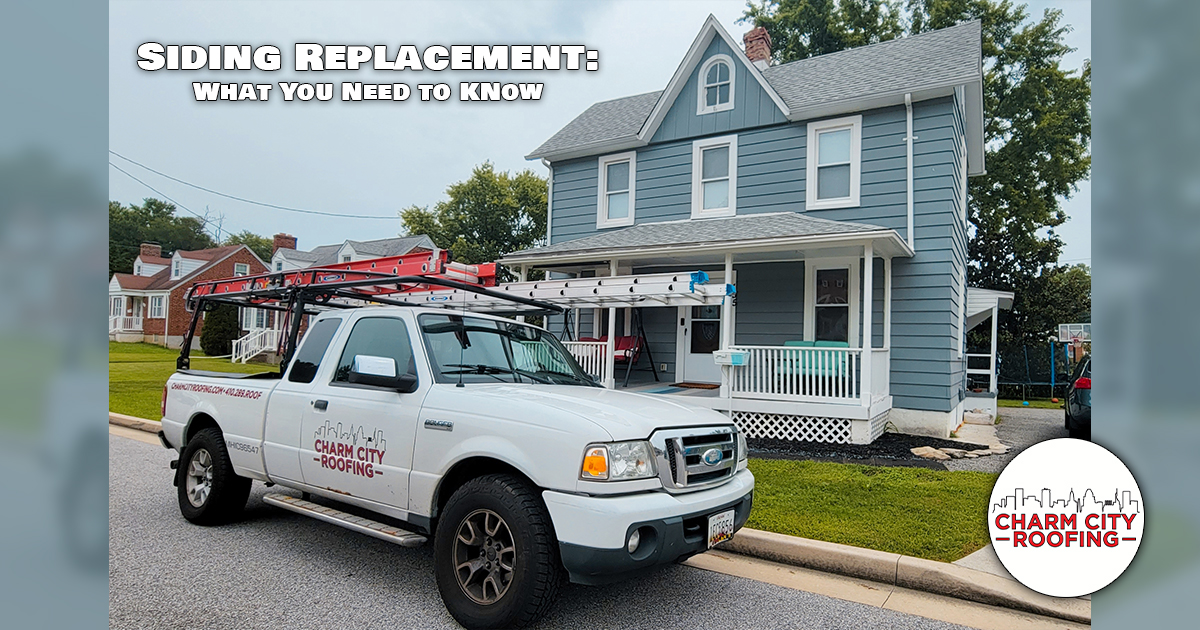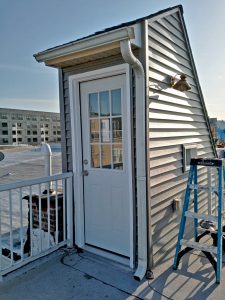
SIDING REPLACEMENT: WHAT TO KNOW
When it comes to keeping your home warm and dry, your roof is the superhero. Dutifully keeping rain, wind, and snow at bay, the Asphalt Defender works around the clock to ensure that no moisture enters your cozy sanctuary. (We like to think of ourselves as the Jarvis to your roof’s Iron Man, but that’s neither here nor there.)
But every good superhero needs a sidekick. While roofs are the main player in your house’s defense against the elements, weather protection is not a one-man show. The roof is just the front man in a team of systems that provide waterproofing and insulation. Siding is the roof’s faithful support, providing a waterproof barrier for the walls of your home.
Are Siding Replacement and Roof Replacement Related?
While siding and roofing are two separate systems, they have a lot in common. Both serve the primary function of protecting your home against wind, rain, snow, and all other forms of inclement weather. Both require a skilled hand to ensure water tightness across the entirety of the project. In both roof replacement and siding replacement, a keen eye for detail is of the utmost importance. The skills of a roofer translate well to siding projects.
There are, of course, differences between the two systems. Different pieces are used in siding than in a roof membrane. Many of these pieces are made from the same material as roofing components— PVC and vinyl are common in both contexts, for example. Liquid applied membrane can even be used in the waterproofing of home exteriors. But while the material may be familiar, the items themselves are designed to perform different functions. This means siding repairs or replacement require skills that are not applicable to roofing, and the reverse is also true.

New Siding on a rooftop walkout
When Do You Need Siding Replacement?
It isn’t usually hard to tell when a home’s siding is starting to age. Some damages are obvious, while others might be more difficult to identify immediately. If you think it might be time for a siding replacement, here are a few things to look for.
Cracks and holes
If there’s one thing superheroes are known for, it’s big cinematic battles. The battles your siding has been fighting might not be epic enough for the silver screen, but if you look closely, you’ll still see the scars. Hail, wind, and trapped water will leave cracks and holes in your siding that will grow over time. This will compromise your siding’s ability to keep your home warm and dry. Cracked siding also provides an entry point for insects and other pests.
Energy costs
Sturdy siding is essential in maintaining an energy efficient home. If your siding is warped or loose, odds are your insulation is taking a hit. This will make it harder to keep your house warm in the winter and cool in the summer. If your energy costs have been inexplicably rising recently, it might be time to check your siding. Alternatively, poor roof ventilation can also cause your energy costs to jump!
Loose or missing panels
Missing panels are, for obvious reasons, easy to spot. Homeowners quickly become aware when a large part of their exterior is missing. However, it’s recommended that homeowners try to catch the signs of compromised siding panels before they fall off completely. Check with your hand to see if any of the panels are loose, especially after a big storm.
Warping
While you’re checking panels for looseness, take the time to see if any of your siding has begun to warp. Extreme cases will be obvious— no one has trouble spotting huge, bent-out gaps. However, you may need to look lengthwise down the wall to detect more subtle siding issues. Stand at the corner of your home and position your eye so you’re looking down the length of the wall. If you see bulges and twists, you’ve got warped siding.
Aesthetic damage
It’s true that siding plays an important role in the functionality of your home. But it’s also one of the first things people see when they look at it. Your siding makes your home’s first impression for curb appeal. There’s nothing wrong with replacing siding simply for an aesthetic upgrade. It’s a great chance to try out a new color for the outside of your home. If you simply want to renovate your current look, a siding replacement will breathe life back into an old home.
How Roof and Siding Replacement Work Together
Oftentimes, siding components and roof components overlap. Many siding panels are nailed down underneath the shingles of a roof. Conversely, the flashing on your roof may be fastened under the siding. This doesn’t mean you can’t replace one without replacing the other, though.
Roofing and siding are closely linked, and therefore replacing them both at once can be easier than coordinating two projects. If both your roof and siding need replacement, there’s no downside to bundling the work together! (Check out this article for advice on how to prepare for your upcoming replacement.) Replacing them at the same time may even open up special warranties.
By the same token, if you know you’re having your siding replaced, it’s a good chance to put a professional eye on your roof. (Vice versa, if you’re replacing your roof, ask your contractor about your siding). Getting an assessment from a pro is never a bad idea. You may find damage or wear you didn’t know about, and save yourself a headache later on!
The Bottom Line
Roofing and siding are siblings, not twins. However, enough of the principles of siding replacement are relevant to roofing that you may consider using the same contractor for both jobs. On top of that, replacing your siding and roof at the same time can make certain construction processes easier. Put together, new roofing and siding will elevate your home to a new level of beauty and functionality.
